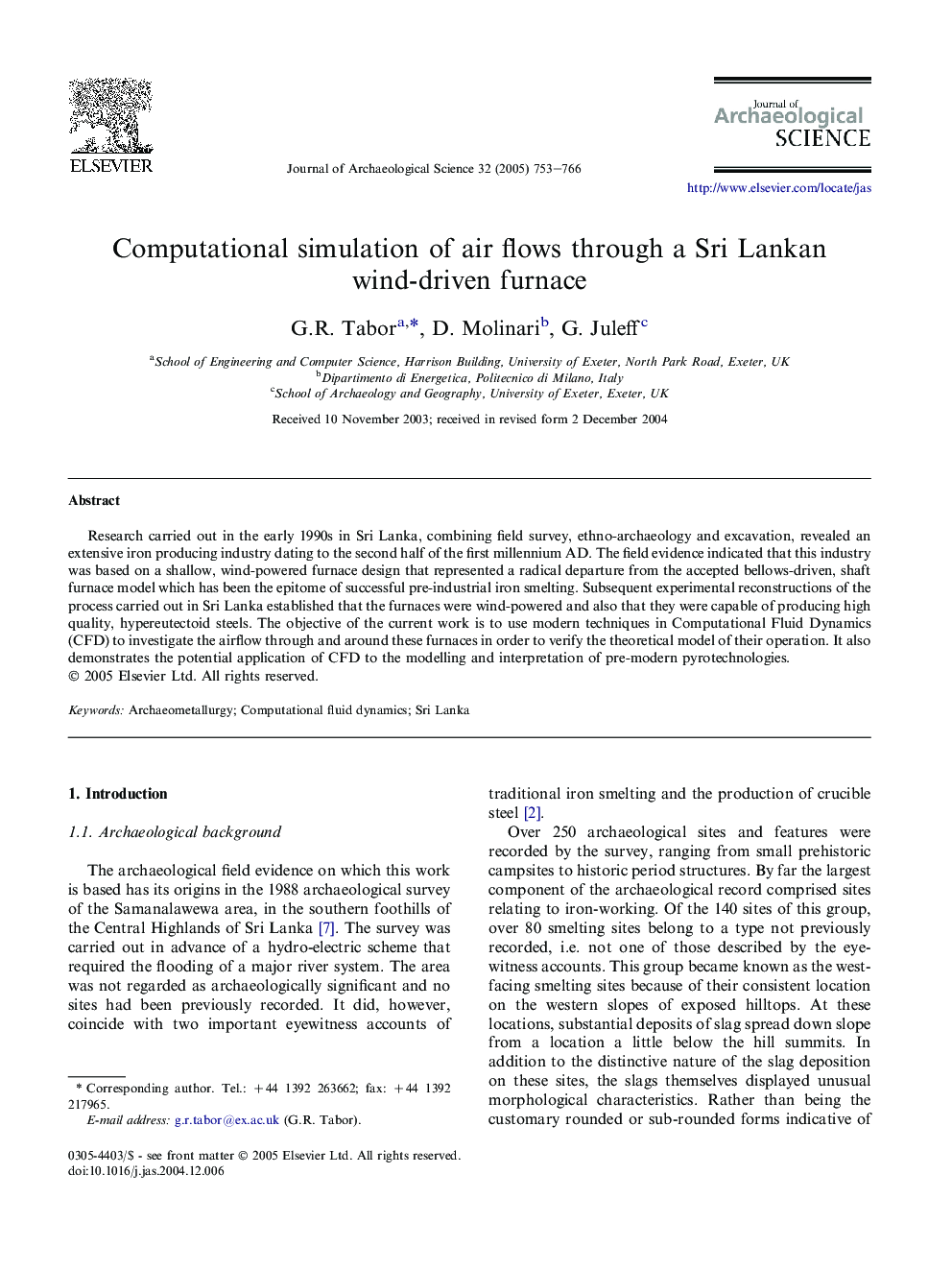| Article ID | Journal | Published Year | Pages | File Type |
|---|---|---|---|---|
| 10499476 | Journal of Archaeological Science | 2005 | 14 Pages |
Abstract
Research carried out in the early 1990s in Sri Lanka, combining field survey, ethno-archaeology and excavation, revealed an extensive iron producing industry dating to the second half of the first millennium AD. The field evidence indicated that this industry was based on a shallow, wind-powered furnace design that represented a radical departure from the accepted bellows-driven, shaft furnace model which has been the epitome of successful pre-industrial iron smelting. Subsequent experimental reconstructions of the process carried out in Sri Lanka established that the furnaces were wind-powered and also that they were capable of producing high quality, hypereutectoid steels. The objective of the current work is to use modern techniques in Computational Fluid Dynamics (CFD) to investigate the airflow through and around these furnaces in order to verify the theoretical model of their operation. It also demonstrates the potential application of CFD to the modelling and interpretation of pre-modern pyrotechnologies.
Related Topics
Physical Sciences and Engineering
Materials Science
Materials Science (General)
Authors
G.R. Tabor, D. Molinari, G. Juleff,
